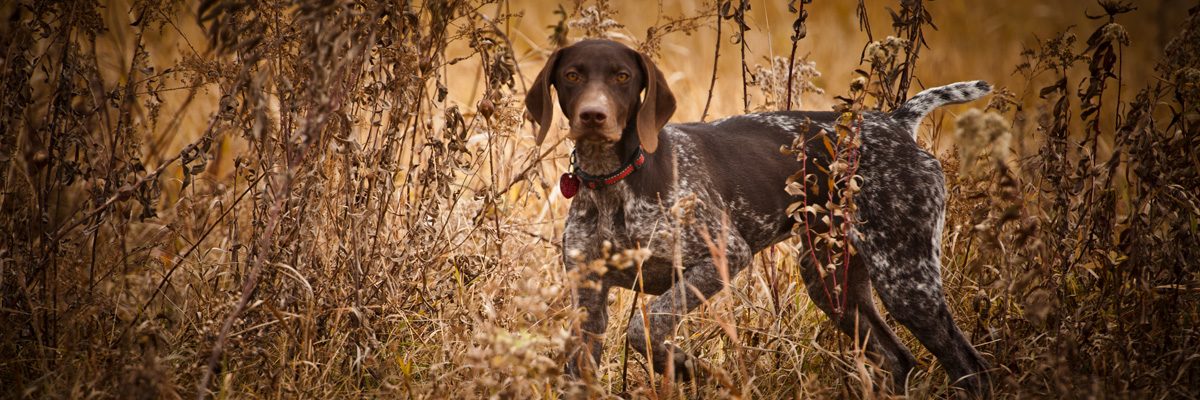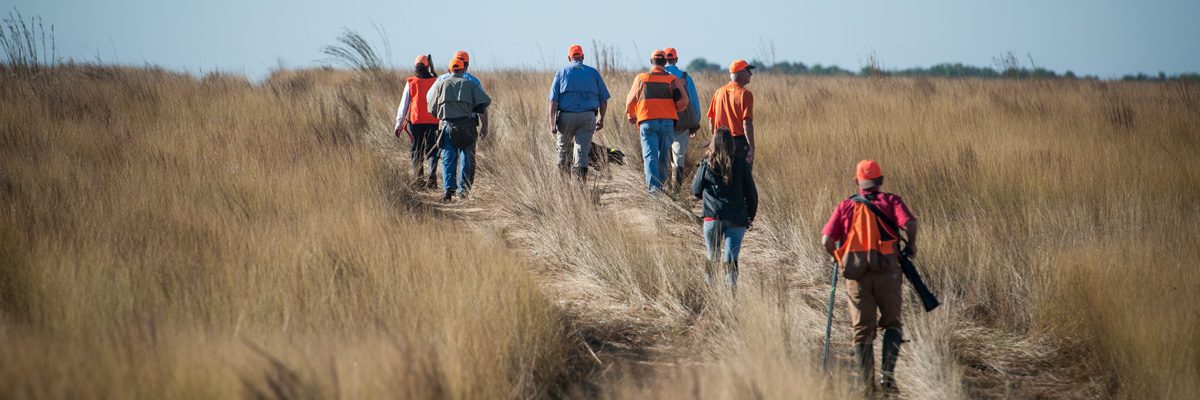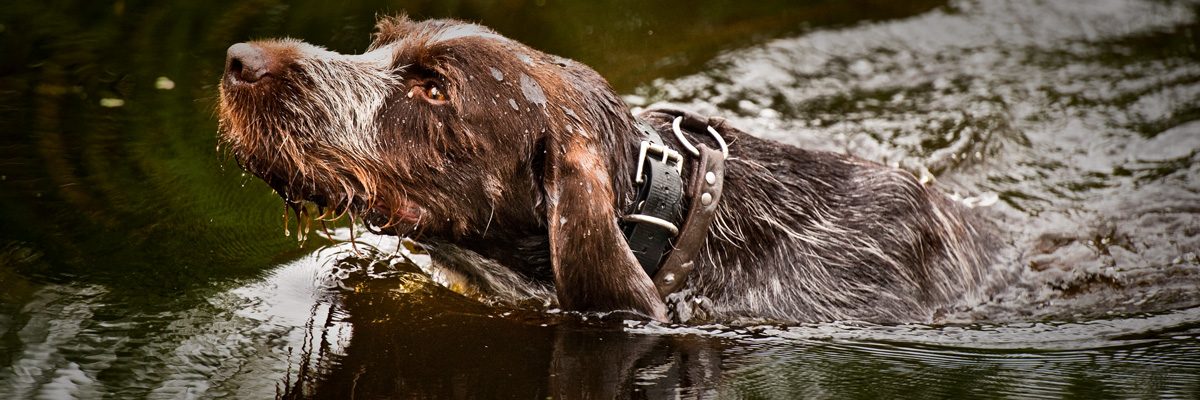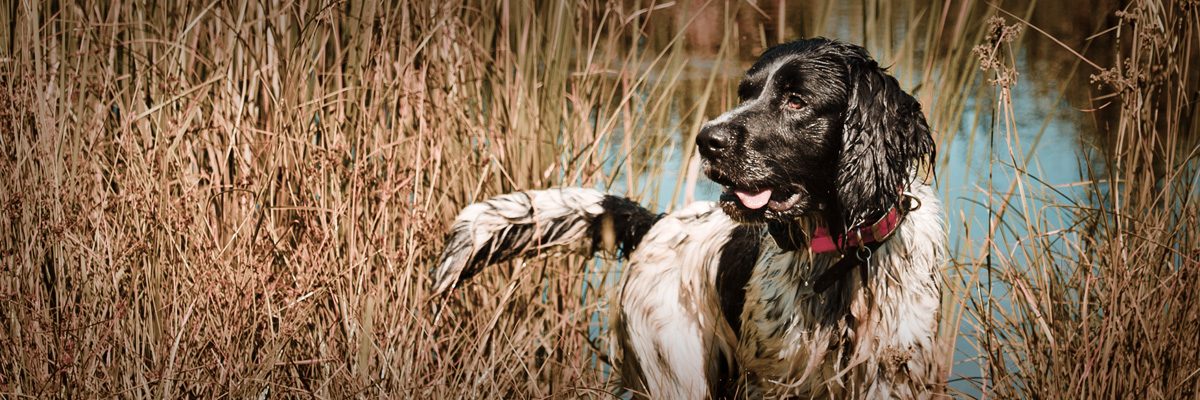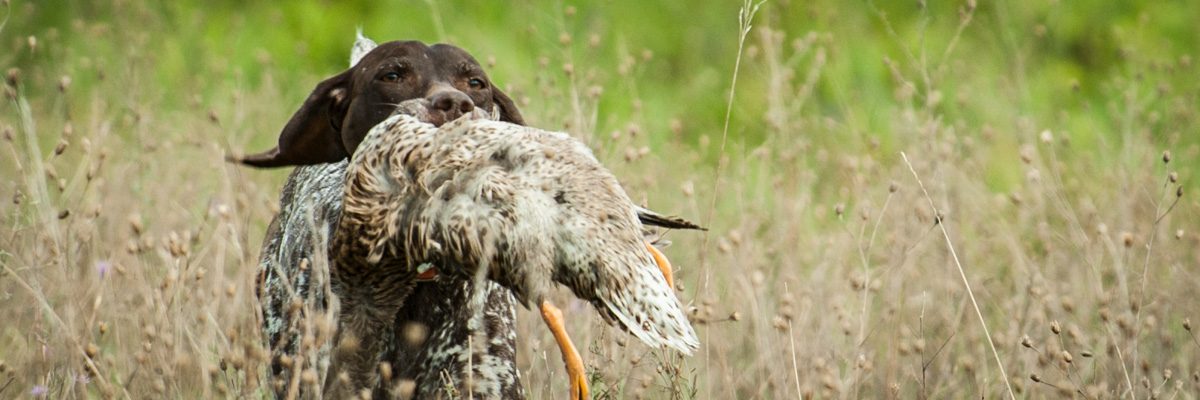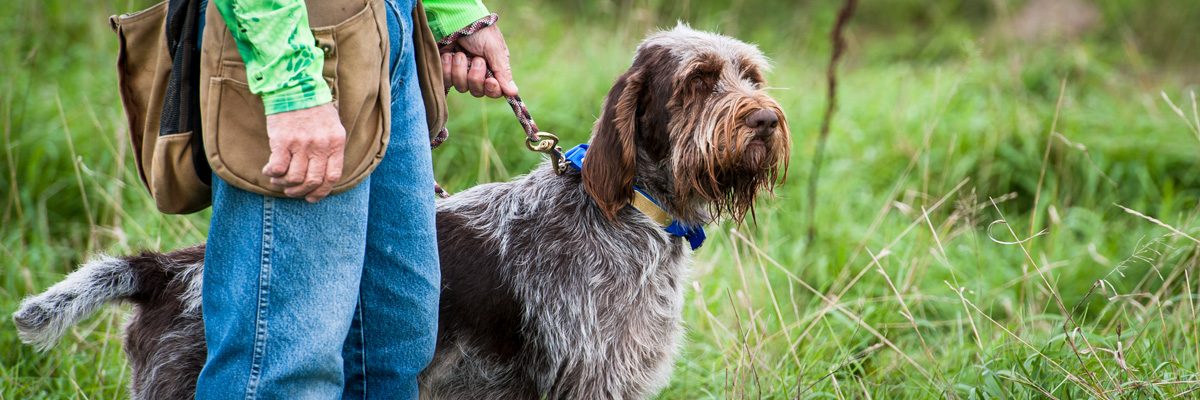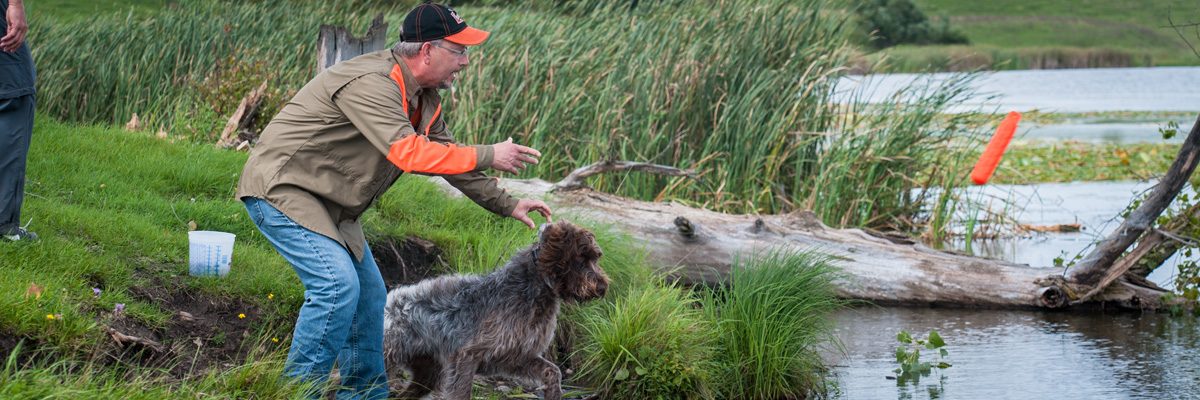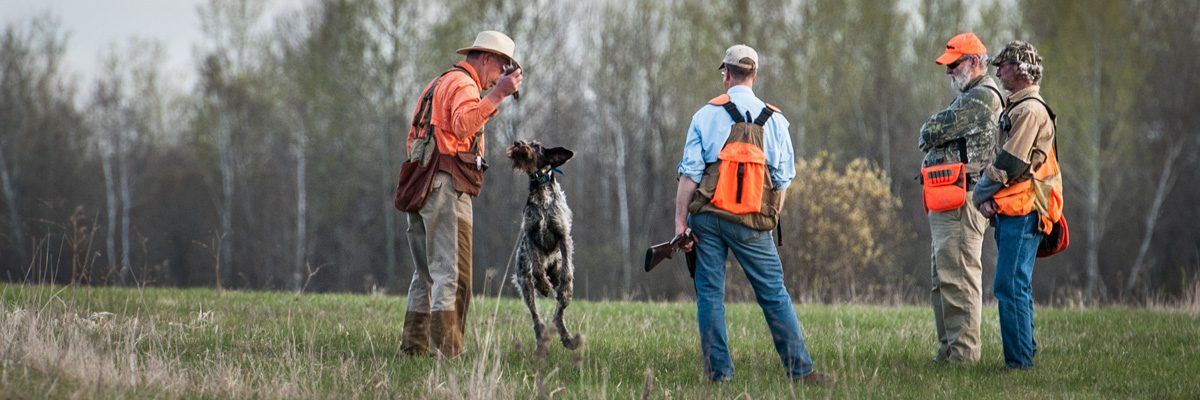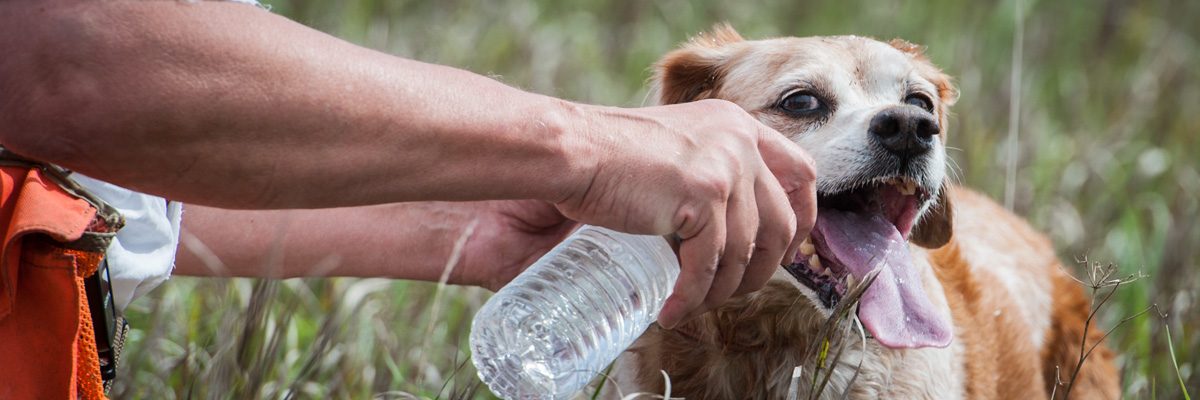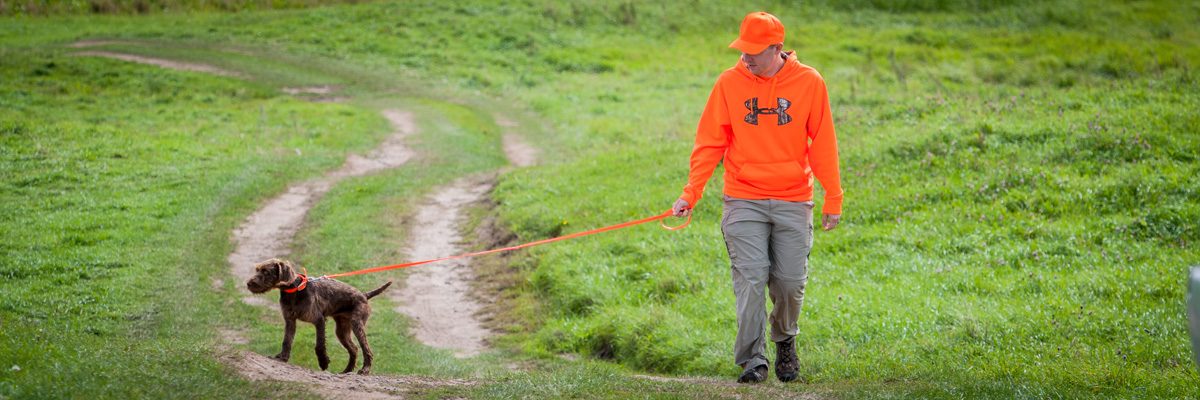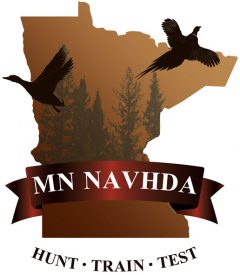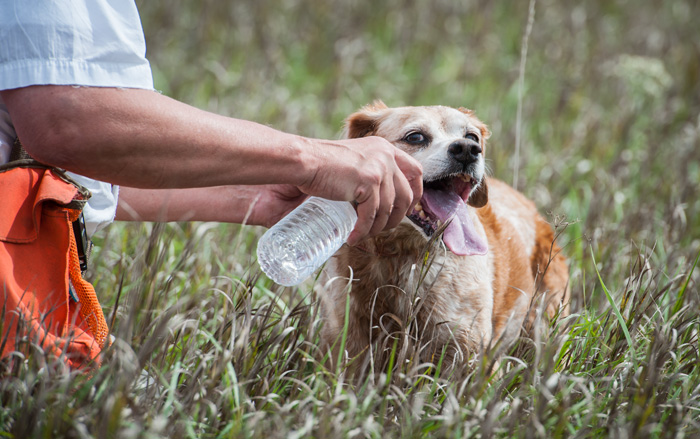You’ve been training hard, and your number in the running order is up. It’s time for the field portion of your test.
“Handler, do you have water?” As much as the judges would hate to lose a handler to heat prostration, what they’re really concerned about is your dog. Some water for yourself is nice, but did you bring plenty of water for your dog?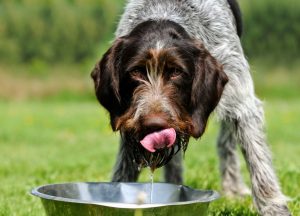
You’re thinking that it’s not so hot – a nice mid-morning temp of about 78 degrees. There’s even a little breeze. You have the better part of a water bottle from the Super America. He won’t drink from the squirt top, but you can always dribble a little in your hand if he needs it, right? Then there’s that little pond in the back corner of the bird field, and besides, he doesn’t like to stop to drink while hunting anyway.
The reality is, on a sunny day the ground temperature can be up to 30 degrees higher, so that nice temp of 78˚ by your head might be 90˚-100˚ or more where your dog is working, and he’s not feeling that gentle breeze like you. For every mile that you walk wearing a light shirt, your dog is running 3 or more miles wearing a fur coat, and while you walk the easier trail, perhaps in knee deep grass, he’s pushing with his shoulders and chest through cover. Oh yeah, and that little back pond? No cooling there since it has the temperature of warm bath water, with the potential for cyanobacteria, otherwise known as blue-green algae.
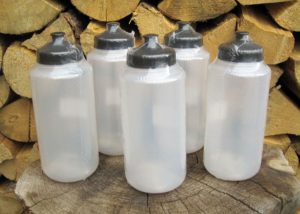 As for, “he can’t drink from a bottle” or “he won’t stop to drink” … Training your dog to drink from a water bottle will be the easiest thing you teach all summer, and can save his life. And even if he doesn’t want it, sometimes you might have to just hook him by the collar, squirt some water into the corner of his mouth, behind his ears, in his armpits and groin (areas for cooling where there are major arteries close to the surface). This also gives you a chance to settle him a bit, refocus and reconnect to go and hunt some more.
As for, “he can’t drink from a bottle” or “he won’t stop to drink” … Training your dog to drink from a water bottle will be the easiest thing you teach all summer, and can save his life. And even if he doesn’t want it, sometimes you might have to just hook him by the collar, squirt some water into the corner of his mouth, behind his ears, in his armpits and groin (areas for cooling where there are major arteries close to the surface). This also gives you a chance to settle him a bit, refocus and reconnect to go and hunt some more.
The South Dakota pheasant opener of 2003 was notable for the fact that upwards of 100 dogs died those first few days from heatstroke. Opening day temps were in the 80s (kind of like many test days…). Granted, many of these dogs were likely overweight and out of condition, but not all fit this description. Their owners simply didn’t know better and probably had plenty of water waiting back at the truck.
Am I painting a picture here for you?
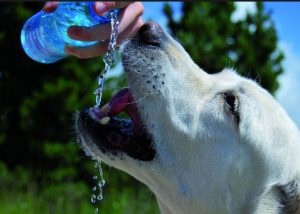 Unlike humans, dogs don’t sweat, except through the pads of their feet. They cool by panting, and an excessively panting dog will have difficulty collecting scent. When the panting isn’t cooling enough, the body temperature rises. Your dog’s normal temperature is 101-102˚. His working temperature could be 104˚. As his temperature approaches 107-108˚, organ damage can occur as he’s cooking his own insides. Owning a good thermometer and knowing your dog’s baseline (working) temperature can keep him out of trouble.
Unlike humans, dogs don’t sweat, except through the pads of their feet. They cool by panting, and an excessively panting dog will have difficulty collecting scent. When the panting isn’t cooling enough, the body temperature rises. Your dog’s normal temperature is 101-102˚. His working temperature could be 104˚. As his temperature approaches 107-108˚, organ damage can occur as he’s cooking his own insides. Owning a good thermometer and knowing your dog’s baseline (working) temperature can keep him out of trouble.
Dr. Joe Spoo of Sioux Falls, SD, is a veterinarian and active with the Tri-State NAVHDA chapter, and authors the blog “Gundog Doc.” He writes “I would recommend taking your dog’s temp after a day of hunting or while out training when you are not even close to crossing the overheating line. This will give you an idea at what temp your pup typically runs while at work and will allow some sort of baseline if you get into trouble out in the field.” Take a moment to read the rest of this fine article at http://www.bestcarepethospital.com/avoiding-heat-stroke/.
Know the symptoms. Heat stress symptoms include aggravated panting, heavy salivation, dark red gums, and poor coordination. Test for dehydration by pinching a roll of skin on the back of your dog’s lower neck. If it “sticks” up, the dog may need hydration. Flush his mouth with cool water, remove saliva, give him or her small drinks of water, and, if possible, immerse the dog in cool water. As it progresses, there can be ataxia – stumbling around – confusion or glassy eyes, trembling or weakness.
Even better is to prevent the symptoms from ever occurring. As the dog’s internal temperature rises and organ damage occurs, death or permanent damage are possible. Learn how to address the symptoms and gradually cool your dog down.
For treatment in the field, the biggest thing is to get them cooled down and bring down that internal temperature. Gradual cooling is key. Use cool water, not cold, as ice water can cause capillaries to constrict, thereby inhibiting internal cooling. You can walk them around in cool water or spray them down. Put 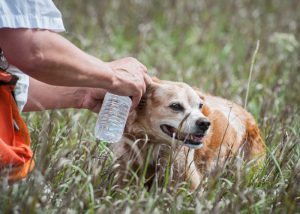 them into a vehicle with the A/C on high, blowing on them. Stop when their temperature reaches 103. Their internal thermostat is messed up, and you don’t want their temperature to drop too far, causing hypothermia.
them into a vehicle with the A/C on high, blowing on them. Stop when their temperature reaches 103. Their internal thermostat is messed up, and you don’t want their temperature to drop too far, causing hypothermia.
There are many options for carrying plenty of water afield, from hunting vests slotted to carry 50-100 ounces of water in bottles, to camelback versions. I myself may go through up to 60 oz. of water in a single NAVHDA utility test. Keep in mind that it also doesn’t have to be hot for your dog to overheat. Think of athletes you see running outdoors in cold weather with light clothing. Their workout causes their internal temperature to rise. Your dog is an athlete as well, and his fields of play are CRP fields and cattail sloughs. He can even overheat on a cool day.
These versatile dogs of ours are splendid creatures indeed! Preparing for the test and field includes both training for performance and learning proper care. If we’re not fully prepared to care for them, how can we expect them to perform to their fullest for us?
Sources :
Dr. Joe Spoo http://www.bestcarepethospital.com/avoiding-heat-stroke/
Dennis Anderson https://www.in-depthoutdoors.com/community/forums/topic/dogs_69482/
Bill Dillon http://www.french-brittany.com/heat.pdf
